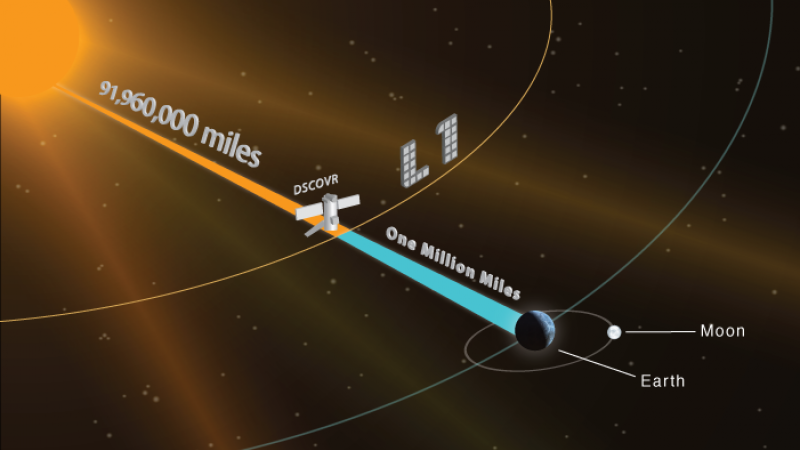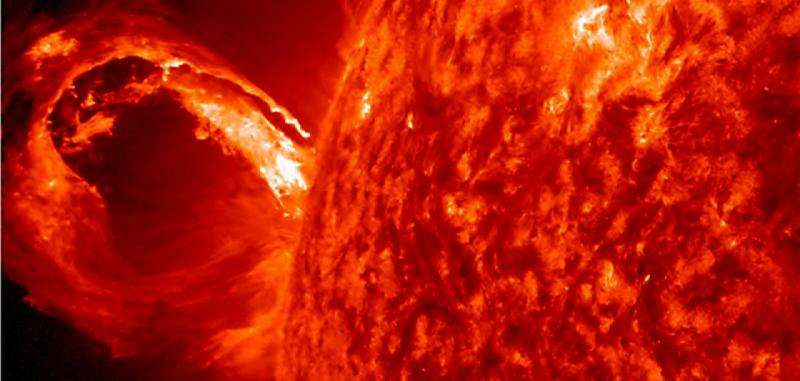DSCOVR is the linchpin of next-generation space weather forecasts

NOAA's first space weather satellite, DSCOVR, has completed instrument validation and will go operational on July 27, when it will take over the role of monitoring potentially damaging space weather storms as they approach Earth.
DSCOVR, which stands for Deep Space Climate Observatory, brings improved measurements and higher quality data than currently available, giving forecasters better information with which to issue critical space weather warnings and alerts.
"Even though the sun is 93 million miles away, activity on the surface of the sun can have significant impacts here on Earth," said Tom Berger, director of NOAA's Space Weather Prediction Center. "Severe space weather can disrupt power grids, marine and aviation navigation, satellite operations, GPS systems and communication technologies. DSCOVR will allow us to deliver more timely, accurate, and actionable geomagnetic storm warnings, giving people time to prevent damage and disruption of important technological systems."
DSCOVR's primary space weather sensors are the Faraday Cup plasma sensor, which measures the speed, density and temperature of the solar wind, and a magnetometer, which measures the strength and direction of the solar wind magnetic field. Together, the instruments provide forecasters with the necessary information to issue geomagnetic storm warnings.
Data from DSCOVR's instrumentation will provide better information to forecasters and allow existing and future forecast models to run more reliably. The improvements also will open new opportunities for researchers to better understand coronal mass ejections along with high-speed solar wind and shocks, and to find ways to improve space weather forecasting.
DSCOVR data will be used in a new forecast model – the Geospace Model – due to come on line this year. The Geospace Model will enable forecasters to issue regional, short-term space weather forecasts for the first time, including predictions on the timing and strength of a solar storm that will impact Earth. Currently, the Space Weather Prediction Center issues a single forecast for the entire planet.

DSCOVR replaces NASA's aging research satellite, the Advanced Composition Explorer, also known as ACE. DSCOVR was launched on February 11, 2015, and reached final orbit on June 8. It is located one million miles from Earth, where the gravitational influence of the sun and the Earth are in equilibrium. DSCOVR serves as a distant early-warning sentinel, like a tsunami buoy in space, to alert NOAA of incoming eruptions from the sun.
Data from DSCOVR, which will be available to the public in real-time online, will allow forecasters to provide space weather warnings and alerts up to an hour before a surge of particles and magnetic field generated by solar storms hit Earth. The Space Weather Prediction Center (SWPC) provides forecast products and data to infrastructure operators and the general public through its email alert service to more than 47,000 subscribers. Owners or operators of potentially vulnerable technologies can then take steps to protect their equipment or services.
Provided by NOAA Headquarters





















